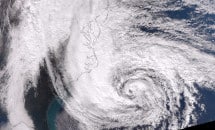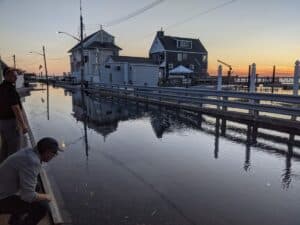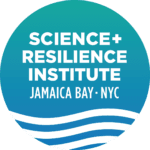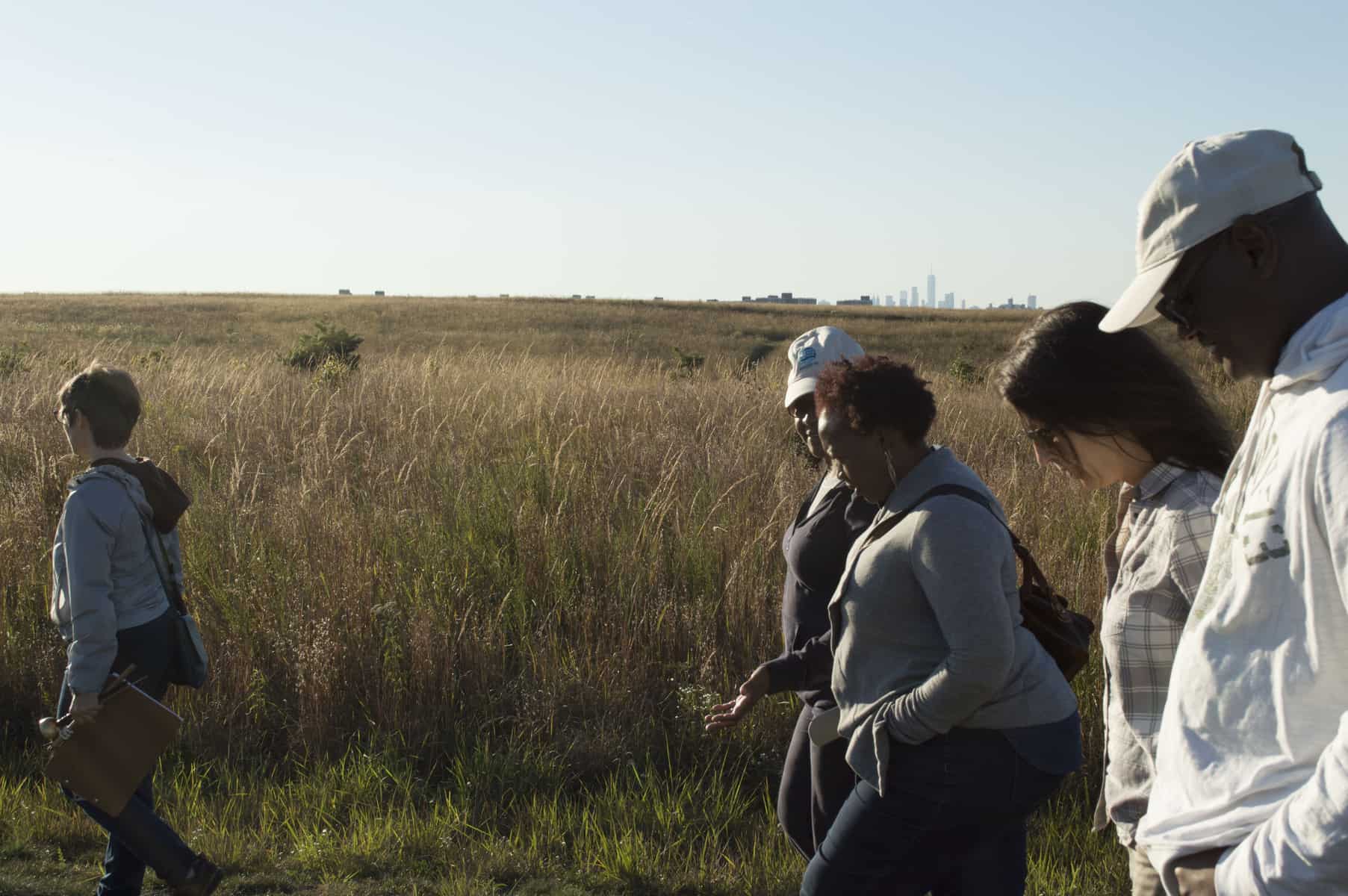 What is resilience?
What is resilience?
For communities around Jamaica Bay, Hurricane Sandy’s landfall on October 29, 2012 was a tragic reminder of how much damage a large-scale and rapidly moving disturbance can make. Lives were lost. Transportation, food, and energy were disrupted. Physical and natural infrastructure was destroyed. But successful stories of recovery in the aftermath of Hurricane Sandy were a more hopeful reminder of the many ways that people, plants, and animals can potentially re-group, recover, and sometimes thrive in the face of adversity. After Sandy, the human and natural worlds bounced back in various degrees, helped in part through coordinated and innovative efforts of community groups, local governments, the private sector, and state and federal agencies. But Sandy is just the latest catastrophic event in a coming century of unforeseen stresses and shocks. Resilience is about finding ways to recover more quickly and with less disruption not only from future coastal storms but also from other disturbances with intersecting and compounding effects, such as those related to urbanization and climate change.
The complexity of systems
In its everyday usage, resilience is about bouncing back from adversity. The idea of resilience has a similar but more technical use in the natural and social sciences that are at the heart of the Institute’s research. Here resilience refers to the capacity of a complex system to recover from disturbance. But what do these different terms mean? A
complex system can be described as a network of related components that exchange energy, matter, or information and form an integrated whole. The urban watershed Jamaica Bay is an example of a complex system. People, plants, and animals are tied together in complex and dynamic exchanges with the waters, land, air, and built infrastructure that support life. Inherent to thinking about Jamaica Bay as a complex system is a recognition that the effects of a disturbance such as Hurricane Sandy are not easy to forecast or understand. An impact to one part of the system has complicated cascading effects.
Bouncing back from disturbance
A system constantly responds to various disturbances. A
disturbance is any event that disrupts the existing structure and function of a system. In the social and natural system of Jamaica Bay, a disturbance could be many things, including a brief high-intensity shock such as a hurricane, a series of shocks such as cycles of capital investment and disinvestment, or a long-term lower intensity stress such as sea level rise or changing water quality. A few higher-order drivers of change over the last century and half have given shape to many of the disturbances that are particularly front and center in the Institute’s thinking. These drivers include urbanization, climate change, and coastal storms.
In the face of such disturbance, a highly resilient system will exhibit minimal disruption. It will rapidly bounce back from a shock and steadily adapt over the long-term in response to stresses. In contrast, another system may be less resilient to a similar disturbance. A less resilient system may be slower to recover from a shock and remain unstable for longer. Under stress, it may rapidly reach a threshold or “tipping point” that shifts its state and makes it unable to regroup and recover in a recognizable form.
Resilience science
To better understand the way complex systems work requires a unique approach that can make connections across physical, social, and ecological sciences. To better understand the resilience of salt marshes in Jamaica Bay, for example, may require physical science to describe the ways plants uptake chemicals in water, ecological science to describe how communities of plants adapt to changes in the environment, and social science to elaborate the ways people make decisions about conserving water quality or ecosystems. It may require someone to set up machines to monitor changes in the chemical and physical inputs to the salt marsh and another to develop mathematical models to represent changes. Together, scientists may develop metrics and indicators as meaningful measures of the salt marsh as a system, its function, and its position with respect to system-level thresholds or tipping points.
Putting resilience into Practice
As a vision of the future, a more resilient Jamaica Bay would be able to withstand shocks and stresses to the social, physical, and ecological systems that support the well-being of living populations. To put resilience into practice and meet this vision we need to better understand how systems respond to disturbance but also make decisions about what constitutes well-being and what system interventions might get us there. This is not a straightforward effort. Resilience in practice is interpreted in various ways by different thinkers. Ecologists, for example, extend resiliency practice to the restoration of coastal wetland habitats that can help strengthen the capacity of the ecosystem to absorb stresses or shocks. Resilient local ecosystems can support well-being by protecting the biodiversity of a region and helping meet a range of human needs such as protecting environmental quality, reducing natural disaster risk, adapting to climate change, and enjoying recreation and natural amenities. Distinct from ecologists, engineers often emphasize a different aspect of resilience. They may envision resiliency practice as a structurally defensive notion—for example, building seawalls or abatements to defend against storm surge pushing into the bay. Furthering the complexity, communities of residents may have a still different concept of resiliency practice that focuses priority on strengthening the capacity of the human community to cope with stressors and shocks.
Reflecting the normal diversity of the world and its complexity, approaches to resilience practice can be complimentary but also sometimes contradictory in nature as vested interests and values differ from group to group. As a partnership among diverse groups and people, the Institute seeks opportunities to engage and harmonize the many approaches to resilience. The Institute works with many different actor groups to improve understanding of how different systems function and change. It helps these groups design and test the effects of different interventions and to help make decisions about what values should prioritize action. Putting resilience into practice requires a particular approach to management that is open to innovating, experimenting, learning, and adapting as new information becomes available. Addressing this need is a key goal of the Institute.












